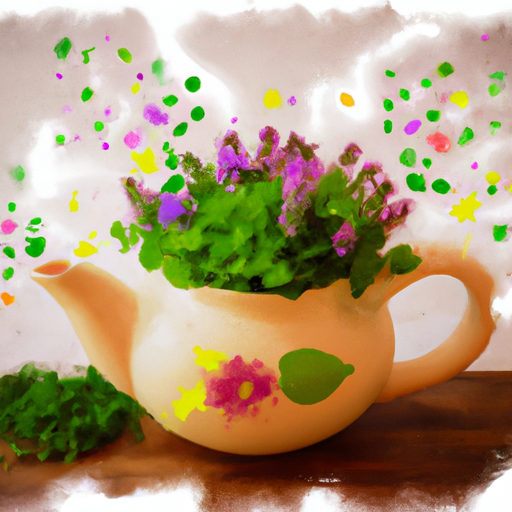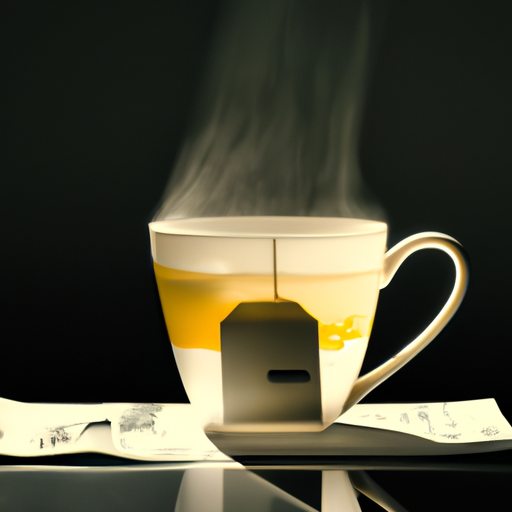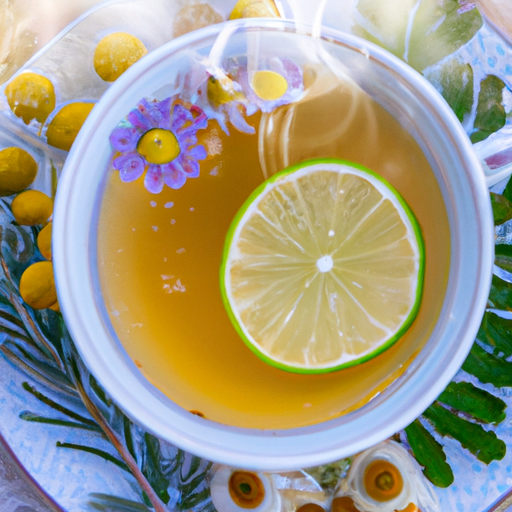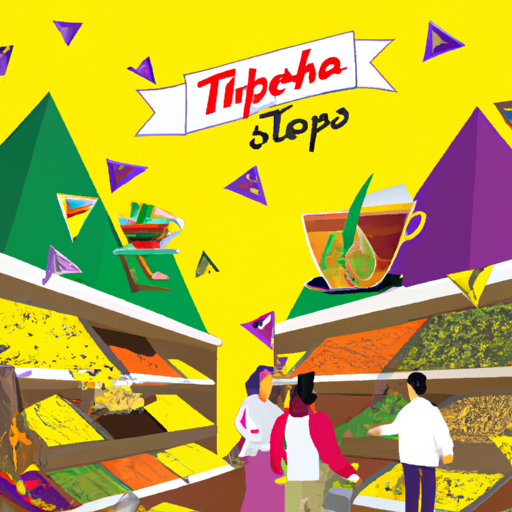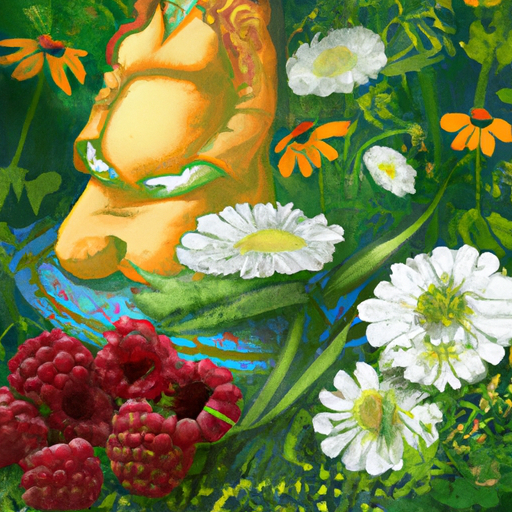Brewing a cup of herbal tea is like orchestrating a symphony of flavors, a dance of delicate aromas that transport you to a world of tranquility and pleasure. As a tea enthusiast, I have discovered the art of creating the most amazing herbal tea blends that awaken the senses and soothe the soul.
In this article, I will guide you through the steps to brew your own cup of herbal bliss, ensuring that each sip is a moment of pure indulgence.
First, we will delve into the world of herbal tea blends, exploring the vast array of options and their unique benefits.
Then, armed with the right ingredients and tools, we will embark on the journey of boiling the water to the perfect temperature, ensuring optimal extraction of flavors.
Next, we will master the art of steeping, allowing the botanical wonders to infuse their essence into the water, creating a symphony of taste.
To enhance the flavor and take your tea to new heights, we will explore various techniques and ingredients that can be added during the brewing process.
Finally, we will strain and serve our creation, ready to be savored and enjoyed.
So, let’s embark on this enchanting tea adventure together, and unlock the secrets to brewing amazing herbal tea that will delight and invigorate your senses.
Key Takeaways
- Choosing the right herbal tea blend is important for personal taste preferences and desired benefits.
- High-quality ingredients and tools are essential for brewing amazing herbal tea.
- Properly preparing tea accessories, such as teapots and infusers, enhances the brewing experience.
- Mastering the correct tea-to-water ratio is key to brewing amazing herbal tea.
Choose Your Herbal Tea Blend
You’ll want to choose your herbal tea blend carefully to ensure you create the perfect infusion for your taste preferences. There are many different types of herbal teas available, each with its own unique flavor profile and benefits.
Some popular options include chamomile, peppermint, ginger, and hibiscus. Chamomile is known for its calming properties and is often enjoyed before bedtime. Peppermint tea is refreshing and can help soothe an upset stomach. Ginger tea is warming and can aid in digestion. Hibiscus tea is tart and tangy, packed with antioxidants.
When choosing the right herbal tea for your needs, consider the flavor you enjoy and the benefits you’re seeking. If you prefer a floral and relaxing tea, chamomile might be the perfect choice for you. If you’re looking for a refreshing and invigorating option, peppermint tea could be the way to go. Think about the specific qualities you want in your tea and compare them to the different types available.
Now that you have an idea of which herbal tea blend you’d like to try, it’s time to gather your ingredients and tools.
Gather Your Ingredients and Tools
When it comes to brewing amazing herbal tea, the quality of your ingredients is paramount. I always make sure to select high-quality herbs and spices to ensure a flavorful and aromatic brew.
Additionally, preparing my tea accessories, such as a teapot, infuser, or tea bags, allows for a seamless brewing experience that enhances the flavors of the herbal blend.
Select High-Quality Ingredients
Using only the finest ingredients, brew a cup of herbal tea that will transport you to a fragrant garden filled with blooming flowers and fresh herbs. When it comes to selecting high-quality ingredients for your tea, it is essential to find reputable suppliers who prioritize freshness and sustainability. By sourcing your herbs and flowers from trusted growers, you can ensure that your tea is of the highest quality. Additionally, understanding the different flavor profiles of various herbs and flowers will allow you to create unique and delightful blends. To help you make informed choices, refer to the table below, which highlights the flavor profiles of popular herbal tea ingredients. By carefully selecting your ingredients, you can create a personalized tea that perfectly suits your taste preferences. Now that you have chosen your ingredients, let’s move on to preparing your tea accessories.
Prepare Your Tea Accessories
To enhance your tea-drinking experience, it’s essential to prepare your tea accessories with care and attention to detail. Here are four important steps to follow:
-
Choosing the right teapot: Select a teapot that matches your personal style and preferences. Consider factors such as material (ceramic, glass, or cast iron) and size (small for individual servings or larger for sharing).
-
Understanding different tea infusers: Familiarize yourself with various types of tea infusers, such as stainless steel mesh balls, silicone strainers, or disposable tea bags. Each has its advantages, so choose the one that suits your brewing style.
-
Cleaning and maintenance: Keep your tea accessories clean by rinsing them thoroughly after each use. Avoid using harsh chemicals that may leave residue and affect the taste of your tea. Regularly check for any damage or wear and replace as needed.
-
Storage: Properly store your tea accessories in a dry and clean place to prevent any odors or contamination. Avoid exposure to direct sunlight, as it may affect the quality of your tea.
Now that your tea accessories are ready, let’s move on to the next step: boiling the water to the right temperature.
Boil the Water to the Right Temperature
First, you’ll want to make sure the water reaches the perfect temperature for steeping your herbal tea. Choosing the right tea leaves is crucial for a flavorful brew, but equally important is boiling the water to the right temperature. Different types of herbal teas require different water temperatures to bring out their unique flavors and aromas. To ensure accuracy, I highly recommend using a thermometer.
To help you easily determine the ideal water temperature for your herbal tea, refer to the table below:
| Tea Type | Water Temperature |
|---|---|
| Chamomile | 205°F (96°C) |
| Peppermint | 212°F (100°C) |
| Rooibos | 200°F (93°C) |
| Lavender | 195°F (90°C) |
By following these recommended temperatures, you’ll be able to extract the best flavors from your herbal tea leaves. Once the water has reached the desired temperature, you can proceed to steep your tea and unlock its full potential. Steeping time will vary depending on the type of tea, so be sure to refer to the brewing instructions provided with your tea leaves. With the water temperature set just right, you’re one step closer to enjoying a delightful cup of herbal tea.
Steep Your Tea
When it comes to steeping herbal tea, it’s crucial to follow the recommended steeping time in order to achieve the perfect flavor and aroma.
This ensures that the tea isn’t under-steeped or over-steeped, resulting in a balanced and satisfying brew.
Additionally, using the correct tea-to-water ratio is essential for extracting the optimal amount of flavor from the herbs.
By adhering to these two key points, you can enjoy a cup of herbal tea that’s rich in taste and full of goodness.
Follow the Recommended Steeping Time
As the aromatic tea leaves dance in the hot water, their flavors intensify and create a soothing elixir that transports you to a world of tranquility. The recommended steeping time is crucial in extracting the full potential of different herbal teas.
Each herbal tea has its own unique characteristics and steeping time plays a significant role in bringing out the desired flavors and aromas. It’s important to follow the recommended steeping time mentioned on the packaging or instructions to achieve the perfect balance. However, if you prefer a stronger or milder flavor, you can adjust the steeping time according to your personal preference.
A longer steeping time will result in a stronger flavor, while a shorter steeping time will produce a milder taste. This customization allows you to tailor the tea to your liking.
Moving on to the subsequent section about ‘use the correct tea-to-water ratio’, it’s essential to maintain the right balance for a perfect cup of herbal tea.
Use the Correct Tea-to-Water Ratio
To ensure a delicious and satisfying cup, make sure you get the perfect balance between the amount of tea leaves and water you use. The correct tea-to-water ratio is crucial in extracting the full flavor and aroma from your herbal tea.
Too little tea leaves and your brew will be weak and tasteless, while too much will result in a bitter and overpowering cup. Generally, a ratio of 1 teaspoon of tea leaves per 8 ounces of water works well for most herbal teas. However, it’s important to adjust this ratio based on personal preference and the specific type of tea you’re brewing.
Experiment with different ratios and steeping techniques to find the perfect balance that suits your taste. By mastering the correct tea-to-water ratio, you’ll be on your way to brewing amazing herbal tea that’ll truly enhance the flavor and provide a delightful sensory experience.
Enhance the Flavor
Adding a touch of honey and a squeeze of lemon brings out the natural sweetness of the herbal tea, creating a flavor explosion that’ll leave your taste buds begging for more.
When it comes to enhancing the flavor of herbal tea, there are a few techniques for maximizing flavor intensity. One way is to experiment with different herbs and spices to create a unique flavor profile. For example, adding a sprig of fresh mint or a dash of cinnamon can add depth and complexity to your brew.
Another way to enhance the aroma and flavor is to steep the tea for a longer period of time. This allows the flavors to fully develop and infuse into the water, resulting in a more robust and flavorful cup of tea.
Lastly, try using filtered water instead of tap water. This can help to remove any impurities and create a cleaner, crisper taste.
So, now that you’ve enhanced the flavor of your herbal tea, it’s time to strain and serve, allowing you to fully savor the deliciousness that awaits.
Strain and Serve
Now it’s time to strain and serve your perfectly steeped concoction, allowing you to delight in every sip of this delectable infusion.
When it comes to straining techniques for different types of herbal tea, there are a few options to consider. For loose leaf teas, you can use a fine mesh strainer or a tea infuser to separate the leaves from the liquid. This ensures a smooth and enjoyable drinking experience, free from any unwanted bits. If you prefer using tea bags, simply remove them from the mug or teapot once the desired strength is achieved.
Once your herbal tea is strained, it’s time to think about serving suggestions and presentation ideas. For a touch of elegance, consider using a teapot and matching cups and saucers. You can also add a slice of lemon or a sprig of fresh mint to enhance the flavor and visual appeal. If you’re serving the tea to guests, a tiered serving tray with delicate finger sandwiches and pastries would be a lovely accompaniment.
Straining and serving herbal tea is a crucial step in the brewing process. By using the appropriate straining techniques and presenting the tea in an appealing manner, you can enhance your overall tea-drinking experience.
Now, let’s explore tea pairings and recipes to further expand our knowledge and enjoyment of this wonderful beverage.
Explore Tea Pairings and Recipes
Let’s dive into the world of tea pairings and recipes to discover exciting and delicious combinations that’ll elevate your tea-drinking experience.
When it comes to tea and food pairings, the possibilities are endless. The key is to find flavors that complement each other and create a harmonious balance. For example, a refreshing peppermint tea pairs beautifully with a light and citrusy salad, while a robust chai tea goes perfectly with a spicy curry dish.
To take your tea experience to the next level, why not try some unique herbal tea recipes? One idea is to mix chamomile tea with honey and lemon for a soothing and comforting drink before bed. Another option is to infuse hibiscus tea with fresh berries and a touch of mint for a vibrant and refreshing summer beverage.
Experimenting with different tea and food pairings, as well as trying out new herbal tea recipes, allows you to explore and appreciate the diverse flavors and aromas that tea has to offer. So go ahead, get creative in the kitchen, and discover your own perfect tea combinations and recipes. Cheers to a delightful tea-drinking experience!
Frequently Asked Questions
Can I use fresh herbs instead of dried herbs for making herbal tea?
Fresh herbs add a burst of flavor, like a symphony of fragrances in your herbal tea. However, using dried herbs has its benefits, like concentrated flavors and longer shelf life.
How long should I steep the tea for maximum flavor?
For maximum flavor extraction, steep the tea for 5-7 minutes. This allows the herbs to release their aromatic compounds and infuse the water. The longer steeping time enhances the taste and richness of the herbal tea.
Are there any herbal teas that are safe to consume during pregnancy?
During pregnancy, it is important to choose herbal teas that are safe and offer benefits. Some herbal teas, like chamomile and ginger, can be consumed during pregnancy, providing soothing effects and aiding digestion.
Can I reuse the herbs for a second cup of tea?
Yes, you can reuse the herbs for a second cup of tea. Reusing herbs helps to extract all the health benefits from them. Simply steep the herbs again in hot water and enjoy another cup of herbal goodness.
What are some common mistakes to avoid when brewing herbal tea?
One common misconception when brewing herbal tea is that you can reuse the herbs for a second cup. However, doing so can result in a weaker flavor. Instead, using loose leaf tea offers numerous benefits, including enhanced aroma and richer taste.
Conclusion
In conclusion, brewing amazing herbal tea is a delightful art that anyone can master. By carefully selecting your tea blend, gathering the necessary ingredients and tools, and steeping the tea at the right temperature, you can create a soothing and flavorful concoction.
Don’t forget to enhance the taste with a touch of honey or a squeeze of lemon. Remember, the proof is in the pudding, or in this case, the tea! So go ahead, explore different tea pairings and recipes, and let your creativity flow.
Happy brewing!

